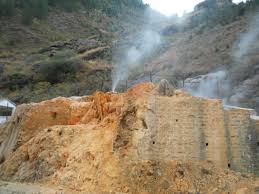
The Himalayan geothermal springs which cover about 10,000 square km in the Garhwal region of Himalaya, show a significant discharge of Carbon dioxide (CO2) rich water. This was found by Wadia Institute of Himalayan Geology, an autonomous institute under the Department of Science & Technology, Govt. of India, which investigated and characterised the gas emissions from these springs.
Daily Current Affairs Quiz 2020
Key-Points
The estimated carbon dioxide degassing (removal of dissolved gases from liquids, especially water or aqueous solutions) flux is nearly 7.2 ×106 mol/year to the atmosphere.
The study published in the scientific journal Environmental Science and Pollution Research suggested that CO2 in these thermal springs are sourced from metamorphic decarbonation of carbonate rocks present deep in the Himalayan core along with magmatism and oxidation of graphite.
Most of the geothermal water is dominated by evaporation followed by weathering of silicate rocks. Isotopic analyses further point towards a meteoric source for geothermal water.
The team of scientists carried out detailed chemical and stable isotope analysis of water samples collected from 20 geothermal springs from major fault zones of Garhwal Himalaya.
Isotopic measurements (identification of the abundance of certain stable isotopes and chemical elements within organic and inorganic compounds) such as Dissolved Inorganic Carbon, and Oxygen along with major ions were analysed for all the samples.





